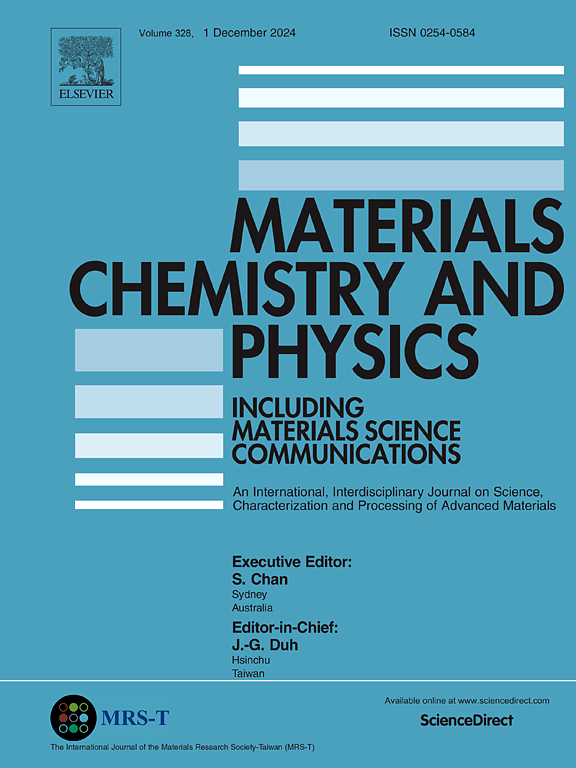Efficient photocatalytic removal of Cr6+ by steel slag loaded cellulose nanofiber aerogel
IF 4.3
3区 材料科学
Q2 MATERIALS SCIENCE, MULTIDISCIPLINARY
引用次数: 0
Abstract
Hexavalent chromium (Cr6+), a notorious toxicant and carcinogen in industrial wastewater, poses severe health hazards. Traditional photocatalytic materials, effective primarily with ultraviolet light, have limited practical application due to their inefficiency under visible light. This study presents an innovative composite, polyethyleneimine-modified nanocellulose aerogel loaded with steel slag (SS/PCNFA), which demonstrates superior Cr6+ reduction under visible light. Our experiments reveal that SS/PCNFA achieves an impressive Cr6+ removal efficiency of 96.4 % within a mere 40 min, with the potential for complete removal within 45 min, starting from an initial concentration of 100 mg/L. Kinetic analysis confirms that the adsorption process adheres to a second-order model with an R2 value of 0.9985, indicating a high degree of fit. Fourier-transform infrared spectroscopy (FT-IR) and X-ray photoelectron spectroscopy (XPS) analyses affirm the presence of nitrogen and hydroxyl functional groups that actively participate in the reduction process. Thermodynamic analysis indicates that the adsorption process is endothermic, with excellent fitting to both Langmuir and Freundlich isotherms, suggesting a combination of monolayer and multilayer adsorption mechanisms. Under optimal conditions, SS/PCNFA has proven to be exceptionally effective in reducing Cr6+ levels, showcasing its promising potential for the remediation of industrial wastewater.

求助全文
约1分钟内获得全文
求助全文
来源期刊

Materials Chemistry and Physics
工程技术-材料科学:综合
CiteScore
8.70
自引率
4.30%
发文量
1515
审稿时长
69 days
期刊介绍:
Materials Chemistry and Physics is devoted to short communications, full-length research papers and feature articles on interrelationships among structure, properties, processing and performance of materials. The Editors welcome manuscripts on thin films, surface and interface science, materials degradation and reliability, metallurgy, semiconductors and optoelectronic materials, fine ceramics, magnetics, superconductors, specialty polymers, nano-materials and composite materials.
 求助内容:
求助内容: 应助结果提醒方式:
应助结果提醒方式:


